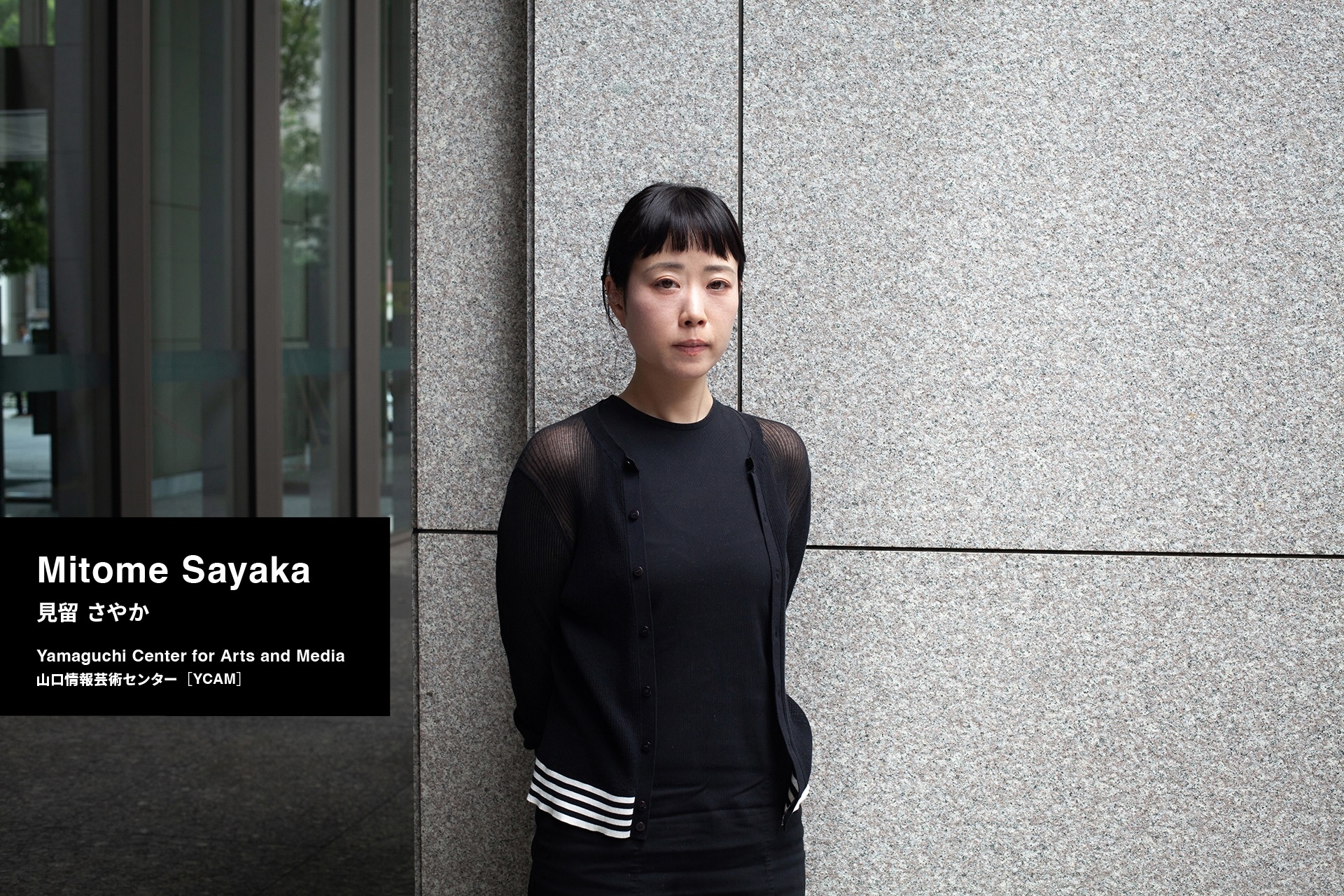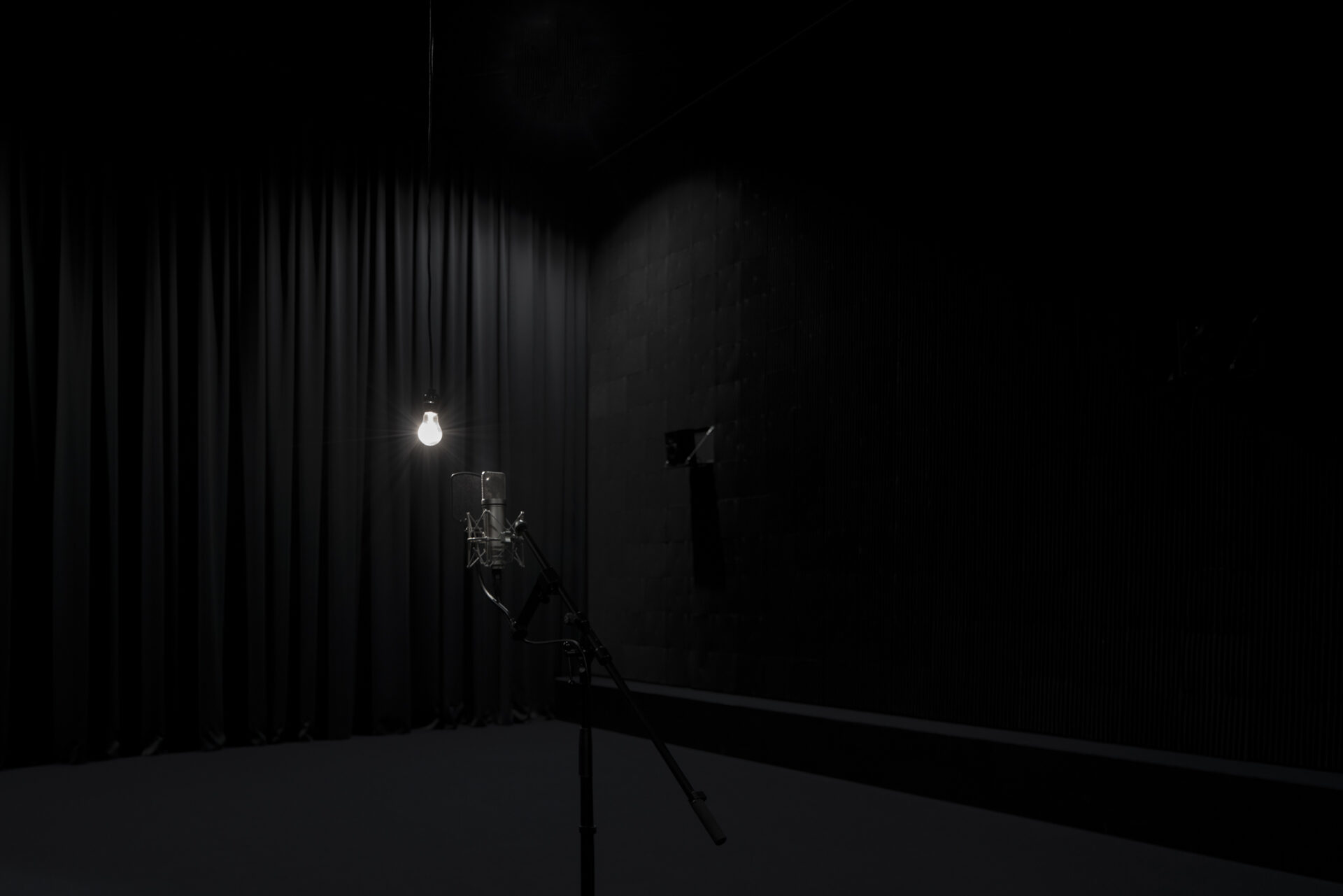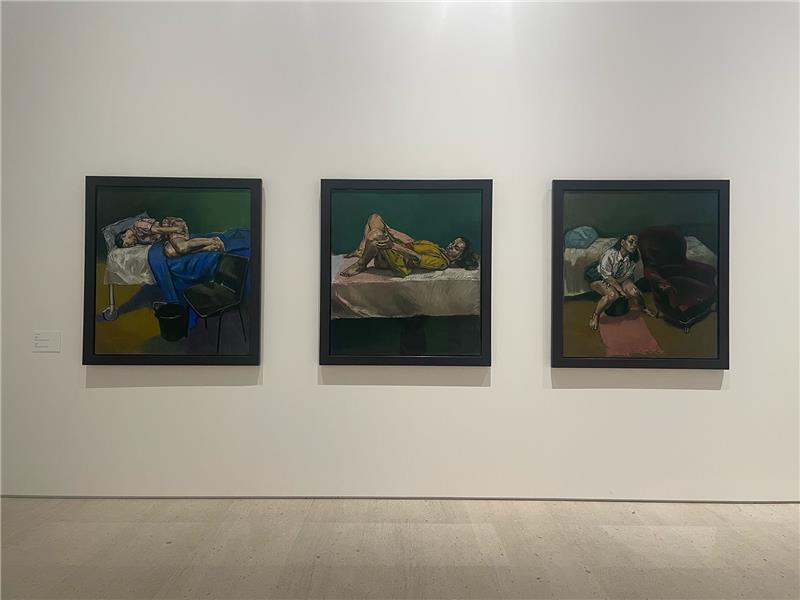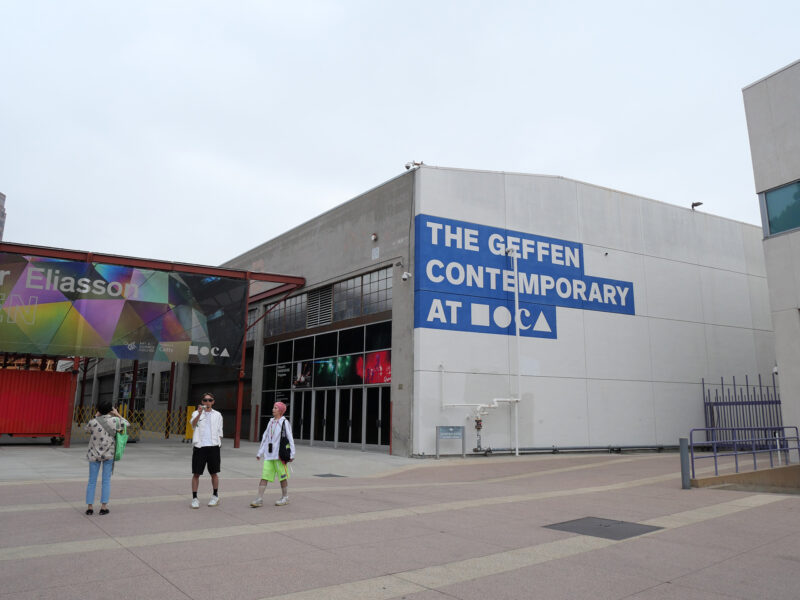1986年生まれ。山口県拠点。
十和田市現代美術館キュレーター(2016〜23年)を経て、2024年より現職。
男性中心主義や近代的な価値観のもとで捉えられてきたセクシュアリティやジェンダーに関する分類や分断の関係性を調査・研究している。方法論としては、キュレーションとエデュケーションを横断する仕組みに関心があり、地方の美術館やアート施設を軸に、特権的でない美術館のあり方を模索している。また、十和田市現代美術館在籍時には、ワークショップやギャラリートーク、アーティストインタビュー(ハンス・オプ・デ・ベーク、塩田千春ほか)、トークイベント(鈴木康広、森北伸、栗林隆、髙橋匡太ほか)を企画・担当した。
コラボレーションの体験談
見留さやか「キュレーションとエデュケーションの相互作用を」
見留さやか(山口情報芸術センター[YCAM]キュレーター)
 2025.07.30
2025.07.30
十和田市現代美術館で、劉建華さんや百瀬文さんといったアーティストの展覧会をキュレーションしてきた見留さやかさん。2024年からは山口情報芸術センター(以下、YCAM)に移り、マヤ・エリン・マスダさんなどの展覧会に携わってきました。今回、JUMPでは、詩人としても活躍するアーティストの青柳菜摘さんとともにポルトガルのリスボンにあるグルベンキアン・モダンアートセンター(以下、CAM)で、展示を開催予定。青柳さんとともに議論を重ねながら、現地でのリサーチを行っています。
地域に根ざした美術館のあり方を再考するとともに、フェミニズムを関心領域とする見留さん。これまでどのような視点からキュレーションを行ってきたのでしょうか? そして、どのようにしてリスボンの人々に対して作品を届けていくのでしょうか? これまでのキュレーターとしてのキャリアとともに、5か年にわたる長いプロジェクトの第一歩を踏み出したいまの考えを伺いました。
聞き手・構成:萩原 雄太 撮影:仲田 絵美 編集:川村 庸子
自分とYCAMへの経験の蓄積
見留さんは、十和田市現代美術館、YCAMとこれまで地方の美術館でお仕事をされています。なぜ今回、JUMPに参加しようと考えたのでしょうか?
見留:YCAMに勤務しはじめてすぐに「こんなプログラムがあるよ」と教えてもらったのです。そのとき真っ先に「YCAMのためになりそう」と思いました。さまざまプログラムを行うYCAMのビジュアルアーツで使用できる予算は限られているので、海外の美術館と共同して展覧会を行ったり、海外で作品を展示したりすることは展覧会の予算内では難しい。自分自身が海外との仕事に携われるだけでなく、YCAMにもその経験が蓄積されていくことに魅力を感じました。
もう一つの魅力が新進アーティストの育成支援です。日本の美術館の規模は海外に比べて小さく、そのスケールに慣れてしまうと、海外の美術館がもっている大きな空間を埋めるのは困難になります。若手から中堅のアーティストを育成していくにあたり、海外の美術館という環境を使えるのはとてもいい機会だと思いました。単純に、日本を拠点にして活動する若手を海外に紹介できる絶好の機会でもありますしね。
見留さんというキュレーター個人としてだけでなく、YCAMというアートセンターのためにもなるし、若手アーティストの育成もできる、と。
見留:はい。もともとわたしは、地域のなかでアートセンターがどのような役割を担えるか、ということに興味をもっています。今回、ロサンゼルス、シドニーなどの候補地からリスボンを選んだのも、人口約54万人のリスボンなら都市の規模が想像でき、山口市と共通するアートセンターのあり方が見出せそうだから。YCAMのこれからの活動の参考になると思いました。
キュレーションとエデュケーションの相互作用
見留さんのこれまでの活動のなかで印象的なのは、地域とともに行ってきた活動です。前職の十和田市現代美術館では2016年に「美術館で学ぼう ラーニング・プログラム」や2017年に廃校になる小学校で「ぼくたちわたしたちの小学校美術館 ようこそ美術館」という展覧会も開催してきました。そもそもどのように地域とのかかわりに関心をもつようになったのでしょうか?
見留:原体験になっているのは、中学生の頃、NGO「ペシャワール会」現地代表であり、アフガニスタンやパキスタンで医療・農業支援に取り組んでいた医師の故・中村哲さんの講演会の手伝いをしていたことかもしれません。哲さんは、最初、医師としてアフガニスタンで十分な医療を受けられない人の診療を行っていましたが、いったん治ってもまた治療に戻ってくる人が多く、その原因は干ばつによる食糧不足と水の汚さにあることを知った。そこで彼は、清潔な飲料水を得るために井戸を掘ったり、用水路を整備したりと、インフラ整備や農地再生に乗り出します。このときに彼がこだわったのが、ほかの国から機械や資材をもってくるのではなく、現地にあるものでつくること。それによって、補修するときに外国人に頼ることなく、現地の力で補修することができ、一過性の支援にならないのです。
わたしがエデュケーションプログラムを考えるときも、その土地の人たちがそこにある素材を用いて継続的に続けられることを大切にしています。東京の考えをもっていくのではなく、住んでいる人たちと時間や体験を共有しながら、美術がどのように根づいているのかを見極めつつ企画を練っていく。それは、哲さんからの影響だと思います。
中村さんは2019年に銃撃され、帰らぬ人となりましたが、思わぬところにも影響を与えていたのですね。現在、YCAMではどのような活動を行っているのでしょうか?
見留:そもそも、YCAMに移った理由は、キュレーションとエデュケーションの境目なく仕事ができると思ったからです。多くの公立美術館では、縦割りの弊害でこの2つが分断されていたり、人手不足の影響で一人のキュレーターが両方を抱え込まざるを得ない状況があったりします。魅力的な展覧会をつくることも大切ですが、それと同じくらい作品と鑑賞者がつながっていくのも大切なこと。キュレーションとエデュケーションを横断しながら、作品と鑑賞者を結びつける媒介者になっていくことに興味がありますね。
作品を通じて安心して語り合える可能性
地域との協働とともに、見留さんの活動においてもう一つの軸となっているのが、フェミニズムをめぐる仕事です。いつごろから、フェミニズムについて意識するようになったのでしょうか?
見留:10代の頃に、フェミニズムや家族制度などをテーマとする社会学者の上野千鶴子さんのお手伝いをしたことがきっかけです。講演のテープ起こしをしながらその考えを注意深く聞いていくと、彼女のような先輩フェミニストが活動してきたからこそ、わたしたちの世代の環境が少しずつ改善されてきたのだな、と気づいたんです。
見留さんが10代だった2000年代前半は、いまよりもはるかにフェミニズムが一般的ではない状況でした。そのような時代に、上野さんから刺激を受けていたんですね。
見留:メインのキュレーターとして十和田市現代美術館で初めて企画したのも、コミュニケーションのなかで生じる不均衡や、身体・ セクシュアリティ・ジェンダーをめぐる問題を追究している百瀬文さんの展覧会「口を寄せる」(2022年)でした。この展覧会では、百瀬さんの新作《声優のためのエチュード》という女性声優をテーマにしたサウンド・インスタレーションを発表しました。この作品は、「声」だけが聞こえ、性別を判断できるキャラクターの容姿やしぐさが映し出されたアニメーションがないものになります。ですので、映像と切り離された「声」は、性別を超えた流動的な存在として表れます。この展覧会では、多くの若い世代の人が、比較的ジェンダーというトピックを受け入れてくれた。日常生活ではなかなか問題にしにくいものの、作品を通じて安心して語り合える可能性がひらかれていることを実感しました。

百瀬文「口を寄せる」十和田市現代美術館(2022〜23年)
撮影:瀬尾憲司
自主規制しないで表現できる環境
今回、一緒に展覧会をつくる青柳菜摘さんは、過去に十和田市現代美術館において展覧会「亡船記」(2022年)を行っています。さまざまなアーティストがいるなかで、なぜ今回は、青柳菜摘さんと組むことになったのでしょうか?
見留:JUMPの育成対象キュレーターに選ばれたあと、メンターやほかのキュレーターとの話し合いを経て、海外3館のなかからCAMで展示を行うことが決まりました。そして、どのアーティストの展覧会がCAMに合っているかと考えながら、ほかの2館と同様に日本での実績はあるものの海外での展示発表が少ない同世代のアーティストを中心に、十数名をリストアップしていった。私自身、リスボンに関する知識がほとんどなかったことから、当初は漠然と、ポルトガルの画家であり、イラストレーターでもあるポーラ・レゴ(ジェンダーやセクシュアリティ、家父長制、植民地主義といったテーマを取り扱う)と接続できる展覧会をつくりたいと考えていました。
なかなか候補が絞りきれないなか、2024年12月、JUMPのメンターを務めるキュレーターの片岡真実さんとCAMに視察に行ったことで、企画に対する認識が大きくアップデートされました。まず、展示を行うCAMは、館内と館外がガラスでシームレスにつながっていたり、シャットアウトされたりと、いろいろな表情がある建物。魅力的だけど、難しいこの空間を使いこなしたインスタレーションをつくれる人は誰だろうか? そう考えたときに、青柳さんならば、空間を魅力的に使いこなしてくれるように思えたのです。
また、CAMで生み出される作品は、どの美術館でも成立するわけではなく、イチからポルトガルをリサーチしてつくるものになります。もともと、彼女がテーマとしてきた「媽祖(まそ)」(中国や台湾を中心に信仰されている航海の女神)や「見えない存在」は、ポルトガルのマリア信仰や、航海による文化の輸出入といった文脈に接続できるのではないかと思ったことも大きいですね。
2025年5月には、青柳さんと一緒にポルトガルでのリサーチを行っています。およそ2週間のリサーチでは、CAMのあるリスボンだけでなく、ファティマやポルトなど別の町にも足を運んでいますね。
見留:今回のリサーチのなかで、特に印象的だったのがポルトガルの各地にある公共の「洗濯場」でした。ポルトガルを代表する映画監督のマノエル・ド・オリヴェイラの『アブラハム渓谷』(1993年)を見たときに、洗濯場のシーンがとても印象に残り、青柳さんに共有すると、彼女もとても強く関心を示しました。そこで今回のリサーチでは、何箇所もの洗濯場をめぐったのです。昔から地域の人々に使われていた場所ですが、洗濯機が普及している現在でも、現役で使われているところもあります。実際に訪れたのは14か所くらいだったんですが、地図にも記載されていない洗濯場も数多くあり、わたしたちがめぐった場所にはたくさんある印象でしたね。


リサーチで訪れた洗濯場の風景
撮影:見留さやか
地域のなかで使われている洗濯場を通してみると現地のコミュニティのあり方も見えてきそうですね。見留さんのテーマであるフェミニズムや美術館のあり方についても考えられる展覧会になるのでしょうか?
見留:正直、どのように扱うのかはまだ見えていません。ただ昨年12月ポルトガルに滞在した際には、アーティストのレオノール・アントゥネスが、CAMに収蔵された作品を網羅的に見直して、そこから33人の女性アーティストの作品を展示していて、今年の5月の滞在時には、ポーラ・レゴとアドリアナ・ヴァレジャオの展覧会を開いていました。どちらもCAMのメインとなる展示室でのフェミニズムをテーマにした展覧会でした。そのことに勇気をもらったし、そういうCAMの姿勢ともつながる展示にしたいですね。

「Paula Rego e Adriana Varejão: Entre os vossos dentes(Between Your Teeth)」グルベンキアン・モダンアートセンター(2025年)
撮影:見留さやか
フェミニズムのような政治的なトピックを扱う展覧会は、日本の場合、一部の鑑賞者から敬遠される場合もあるかと思います。ポルトガルでは、そのような展示を受け入れる土壌があるのでしょうか?
見留:あると思います。リスボンにある国立民族学博物館に行ったとき、19〜20世紀のアフリカにおけるポルトガルの植民地主義に関する展覧会が開催されており、そのなかに「アフリカの歴史を知ることは、ポルトガル社会にいまだ残る植民地主義の価値観を読み解き、脱植民地化に向けた思考を促すことにつながる」というような言葉がありました。大航海時代に世界各地を植民地支配したポルトガルでは、かつて支配していたブラジルやアフリカなどとのかかわりのなかで形成された民族歌謡「ファド」に見られるように、さまざまな文化的要素が複雑に絡み合い、今日の「ポルトガル文化」がかたちづくられています。ポルトガルがこうした土地や人々を従属させ搾取してきた歴史と批判的に向き合い、政治的なテーマを打ち出す展覧会にも、さまざまな企業がスポンサーになっているのが印象的でした。扱うべきテーマを自主規制しないで表現できる環境があるようですね。
生身のコミュニケーションの必要性
ところで、JUMPにはさまざまなメンターがいますが、かれらとはどのようなかかわりがありますか?
見留:昨年12月の初回の訪問は、キュレーターの片岡真実さんにご一緒させていただきましたが、片岡さんの活動の仕方は、キュレーターとしてとても勉強になりました。片岡さんは、展示をただ見るだけでなく、必ず現地美術館スタッフと対話をして関係性をつくっていきます。どのように運営しているのか、どのような予算規模なのか、どのような鑑賞者が訪れるのか? このような対話を重ねることで信頼関係が生まれ、コネクションがつくられていく。キュレーターとして生身のコミュニケーションの必要性を、あらためて痛感しました。
上の世代のキュレーターのふるまいを直接見ることができるのも、今後の活動にとって大きな糧になりそうですね。最後に、今後見留さん自身としては、どのようなプロジェクトにしていきたいと考えていますか?
見留:CAMでの青柳さんの展示は2026年に開催しますが、その後も記録集の制作や日本での展示など、プログラム自体は5か年計画で進行しています。ですので、展覧会を通して山口市の鑑賞者にもこの活動を知っていただきたいです。この貴重な経験を自分だけのものにせず、YCAMのほかのスタッフとも共有していきたいと考えています。まだ構想段階ですが、YCAMのエデュケーションチームと連携して、CAMで行う展示の鑑賞ツールを一緒に考えることができれば、ほかのスタッフにとっても得難い経験となるかもしれません。また、プロジェクト終了後も、ここで生まれたつながりを大切にしていきたい。CAMとのつながりはもちろん、今回参加している高知県立美術館や滋賀県立美術館などとも、今後を見据えながら関係を深めていきたいと思っています。
2025年6月2日
見留さやか
山口情報芸術センター[YCAM]キュレーター![見留さやか(山口情報芸術センター[YCAM]キュレーター)](https://jump-ncar.artmuseums.go.jp/cms/wp-content/uploads/2025/07/ph_members_mitome-800x800.jpg)


